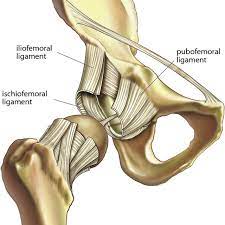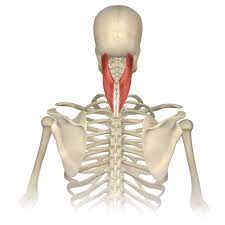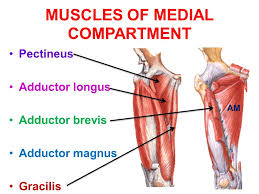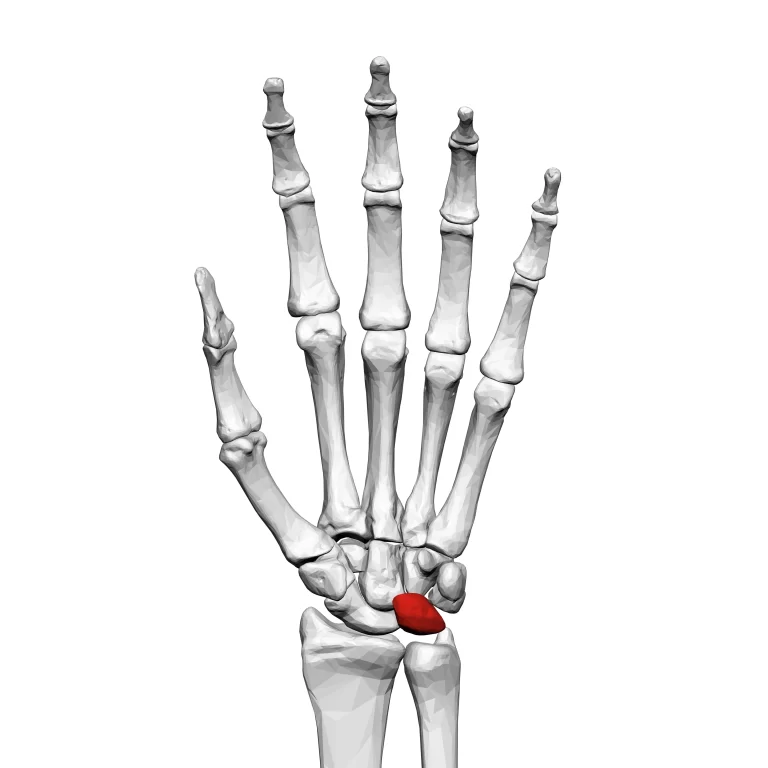Iliofemoral Ligament
Table of Contents
Introduction
The iliofemoral ligament, also known as the Y-shaped ligament is a significant structure found in the human hip joint. It plays a crucial role in stabilizing the hip joint and facilitating various movements. The iliofemoral ligament is one of the strongest ligaments in the human body, contributing to the overall integrity and function of the hip joint.
It is located in the hip joint, connecting the pelvis to the femur bone. The ligament is also known as the Y-shaped ligament or the ligament of Bigelow. It plays a crucial role in stabilizing the hip joint and preventing excessive movement, which could lead to dislocation or injury.
The iliofemoral ligament is composed of dense, fibrous tissue and is responsible for limiting the extension and external rotation of the hip joint. It is an essential component of the body’s musculoskeletal system and is critical for maintaining proper posture and movement.
Structure of the Iliofemoral Ligament
The iliofemoral ligament, also known as the Y-shaped ligament or the ligament of Bigelow, is a strong ligament that connects the ilium bone of the pelvis to the femur bone of the thigh. It is the strongest and most important ligament of the hip joint and plays a crucial role in providing stability and preventing dislocation of the joint.
The iliofemoral ligament consists of three parts: the anterior, posterior, and intermediate bands. These bands arise from different parts of the ilium and converge to form a Y-shaped structure that attaches to the intertrochanteric line of the femur.
The anterior band is the thickest and strongest part of the iliofemoral ligament. It originates from the anterior inferior iliac spine of the ilium and courses downward and laterally to attach to the intertrochanteric line of the femur. The anterior band is responsible for limiting hyperextension of the hip joint.
The posterior band is thinner and weaker than the anterior band. It originates from the superior part of the acetabulum and courses downward and laterally to attach to the intertrochanteric line of the femur. The posterior band is responsible for limiting hyperflexion of the hip joint.
The intermediate band is a thin and weak part of the iliofemoral ligament that connects the anterior and posterior bands. It originates from the body of the pubis and courses upward and laterally to join with the anterior and posterior bands.
The iliofemoral ligament is made up of dense collagen fibers that are arranged in a crisscross pattern. This arrangement allows the ligament to resist tensile forces from different directions, making it extremely strong and resistant to injury.
In the end, the iliofemoral ligament is a Y-shaped ligament that connects the ilium bone of the pelvis to the femur bone of the thigh. It consists of three parts: the anterior, posterior, and intermediate bands. They are made up of dense collagen fibers arranged in a crisscross pattern. The iliofemoral ligament is the strongest and very crucial ligament of the hip joint. It plays a crucial role in providing stability and preventing dislocation of the joint.
Functions of the Iliofemoral Ligament
The iliofemoral ligament plays several important functions in the hip joint. These functions include:
- Providing stability: The iliofemoral ligament is the strongest and most important ligament of the hip joint. It plays a crucial role in providing stability to the joint by preventing excessive movement or dislocation of the femur bone from the acetabulum of the pelvis.
- Limiting hyperextension: The anterior band of the iliofemoral ligament is responsible for limiting hyperextension of the hip joint. This prevents the joint from moving beyond its normal range of motion, which can cause injury or damage to the joint.
- Limiting hyperflexion: The posterior band of the iliofemoral ligament is responsible for limiting hyperflexion of the hip joint. This prevents the joint from moving beyond its normal range of motion, which can cause injury or damage to the joint.
- Supporting body weight: The iliofemoral ligament helps to support the weight of the body by distributing it evenly across the hip joint. This reduces the stress on the joint and helps to prevent injury or damage.
- Absorbing shock: The iliofemoral ligament helps to absorb shock and reduce the impact of forces. that shock is transmitted through the hip joint during activities such as walking, running, or jumping.
- Maintaining alignment: The iliofemoral ligament helps to maintain proper alignment of the hip joint by keeping the femur bone centered in the acetabulum of the pelvis. This prevents abnormal wear and tear on the joint and helps to prevent degenerative conditions such as osteoarthritis.
In conclusion, we can say that the iliofemoral ligament plays several important functions in the hip joint, including providing stability, limiting hyperextension and hyperflexion, supporting body weight, absorbing shock, and maintaining alignment. These functions are crucial for the proper functioning of the hip joint and for preventing injury or damage to the joint.
Blood supply of the Iliofemoral Ligament
The iliofemoral ligament receives its blood supply from several sources, including the medial and lateral femoral circumflex arteries, the deep artery of the thigh, and the superior gluteal artery.
The medial femoral circumflex artery is a branch of the deep femoral artery and supplies blood to the iliofemoral ligament at its attachment to the femur. The lateral femoral circumflex artery is another branch of the deep femoral artery and supplies blood to the ligament at its attachment to the ilium.
The deep artery of the thigh is a branch of the femoral artery and provides blood to the iliofemoral ligament at its midpoint. This artery also supplies blood to other structures in the thigh, including muscles and bones.
The superior gluteal artery is a branch of the internal iliac artery and supplies blood to the iliofemoral ligament at its attachment to the ilium. This artery also supplies blood to the gluteal muscles and other structures in the pelvis.
Overall, the blood supply to the iliofemoral ligament is important for maintaining its health and function. A disruption in blood supply can lead to degeneration or injury of the ligament, which can affect the stability and function of the hip joint.
Symptoms of injuries of the Iliofemoral Ligament
Symptoms of iliofemoral ligament injury can vary depending on the severity of the injury. Some common symptoms include:
- Pain: Pain in the hip joint is a common symptom of iliofemoral ligament injury. The pain may be sharp or dull and may be felt in the front of the hip or in the groin area.
- Stiffness: Stiffness in the hip joint may also be a symptom of iliofemoral ligament injury. This stiffness may make it difficult to move the hip joint or perform certain activities.
- Swelling: Swelling around the hip joint may occur if the iliofemoral ligament is injured. This swelling may be seen with the redness and warmth around the injured area.
- Weakness: Weakness in the hip joint may also be a symptom of iliofemoral ligament injury. This weakness may make it difficult to perform certain activities that require strength in the hip joint.
- Instability: Instability in the hip joint may occur if the iliofemoral ligament is injured. This instability may cause the hip joint to feel loose or unstable, which could lead to further injury if not treated properly.
If you experience any of these symptoms, it is very important to take medical attention as soon as possible.
Injuries of the Iliofemoral Ligament
The iliofemoral ligament is a strong band of connective tissue that plays an important role in stabilizing the hip joint. This ligament is responsible for preventing excessive extension of the hip joint, which could lead to dislocation or injury. There are several activities that can affect the iliofemoral ligament, including:
- Running: Running involves repetitive impact forces that can put stress on the hip joint and its supporting ligaments. The iliofemoral ligament may be affected by the repetitive motion of running, especially if the runner has poor form or overuses the hip joint.
- Jumping: Jumping involves a sudden and forceful movement of the hip joint, which can put stress on the iliofemoral ligament. This ligament helps to prevent excessive extension of the hip joint during jumping, but if the force is too great, it can lead to injury.
- Squatting: Squatting include bending the knees and hips while maintaining the back straight. This movement can put stress on the iliofemoral ligament, especially if the squat is performed in poor form or with too much weight.
- Dancing: Many types of dance involve movements that require a lot of hip mobility, such as hip rotations and extensions. These movements can put stress on the iliofemoral ligament, especially if they are performed repeatedly or with poor form.
- Sports: Sports that involve sudden changes in direction or high-impact movements can put stress on the iliofemoral ligament. Examples include soccer, basketball, and football.
Treatment of the Iliofemoral Ligament Injury
Conservative treatment
Conservative treatment of iliofemoral ligament injury involves non-surgical methods to manage pain, reduce inflammation, and promote healing. Here are some common conservative treatments for iliofemoral ligament injury:
- Rest: Resting the affected hip joint is important to allow the ligament to heal. This may involve avoiding activities that cause pain or discomfort and reducing the amount of weight-bearing activity on the affected hip.
- Ice therapy: Applying ice to the affected hip joint can help reduce inflammation and pain. Ice application should be for 15 to 20 minutes at a time, several times a day.
- Compression: Compression of the affected hip joint with an elastic bandage or compression sleeve can help reduce swelling and provide support to the joint.
- Elevation: Elevating the affected hip above heart level can help reduce swelling and promote healing.
- Physical therapy: Physical therapy can help improve hip joint mobility, strength, and flexibility. A physical therapist may use exercises, stretches, and manual therapy techniques to improve hip joint function.
- Medications: Acetaminophen and ibuprofen are two over-the-counter medications that can help control pain and lessen inflammation. In some cases, a doctor may prescribe stronger pain medications or corticosteroid injections to manage pain and inflammation.
- Assistive devices: Using assistive devices, such as crutches or a cane, can help reduce weight-bearing on the affected hip joint and promote healing.
Conservative treatment of iliofemoral ligament injury may take several weeks or months to be effective. It is important to follow the treatment plan prescribed by a doctor or physical therapist and avoid activities that may aggravate the injury. If conservative treatment is not effective, surgery may be necessary to repair or reconstruct the iliofemoral ligament.
Physiotherapy treatment
Physiotherapy treatment for iliofemoral ligament injury involves a combination of exercises, stretches, and manual therapy techniques to improve hip joint function, reduce pain and inflammation, and promote healing. Here are some common physiotherapy treatments for iliofemoral ligament injury:

Range of motion exercises: Range of motion exercises help improve hip joint mobility and flexibility. These exercises may include gentle hip rotations, hip flexion and extension, and hip abduction and adduction.
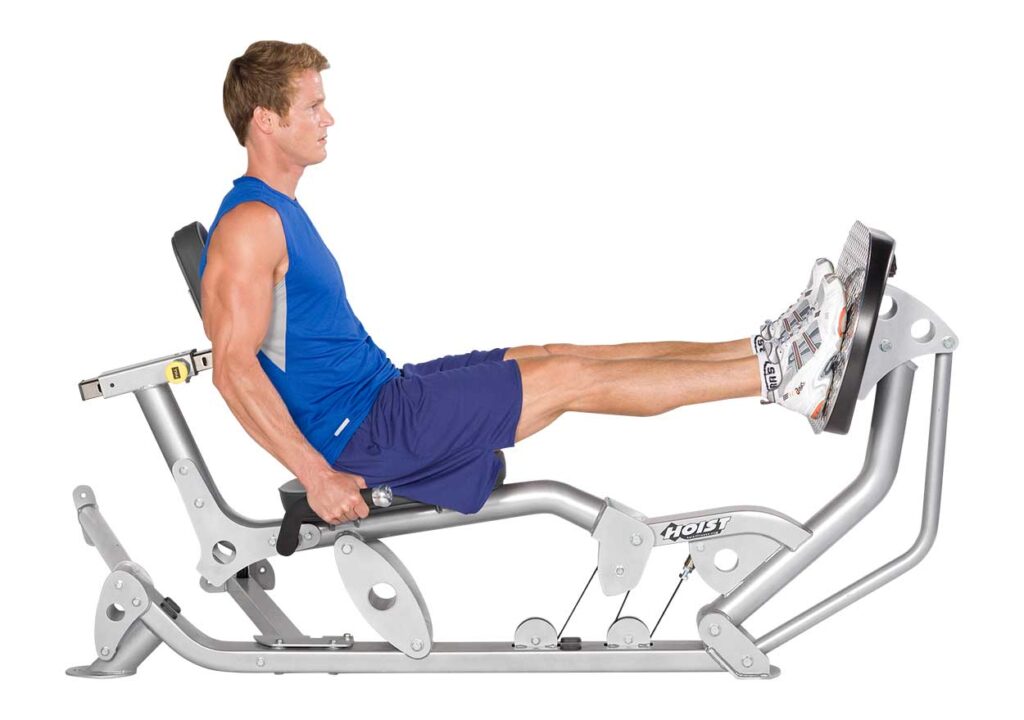
Strengthening exercises: Strengthening exercises help improve hip joint stability and prevent further injury. These exercises may include hip bridges, squats, lunges, and leg presses.
Manual therapy: Manual therapy techniques, such as massage and joint mobilization, can help reduce pain and inflammation and improve hip joint function. A physical therapist may use hands-on techniques to manipulate the affected hip joint and surrounding muscles.
Modalities: Modalities, such as heat or ice therapy, ultrasound, or electrical stimulation, may be used to help reduce pain and inflammation and promote healing.
Gait training: Gait training involves analyzing and correcting walking patterns to improve hip joint function and prevent further injury.
Education: To aid in preventing further injuries, a physical therapist may provide instruction on proper body mechanics, ergonomics, and posture.
Home exercise program: A physical therapist may prescribe a home exercise program to continue the rehabilitation process outside of therapy sessions.
It is very important to follow the treatment plan prescribed by a physical therapist and avoid activities that may aggravate the injury. With proper physiotherapy treatment, most patients with iliofemoral ligament injury can expect significant improvement in symptoms and function.
Risk factors of the Iliofemoral Ligament
There are several risk factors that can increase the likelihood of iliofemoral ligament injury. These include:
- Sports or activities that involve sudden changes in direction or jumping: Sports such as basketball, soccer, and volleyball that require sudden changes in direction or jumping can put significant stress on the hip joint and increase the risk of iliofemoral ligament injury.
- Overuse: Overuse of the hip joint through repetitive activities such as running, cycling, or dancing can also increase the risk of iliofemoral ligament injury.
- Trauma: Trauma to the hip joint, such as a fall or impact, can cause damage to the iliofemoral ligament.
- Aging: As we age, the ligaments and other structures in the hip joint can become weaker and more susceptible to injury.
- Genetics: Some individuals may be genetically predisposed to ligament injuries, including iliofemoral ligament injuries.
- Improper technique: Poor technique during sports or activities can also increase the risk of iliofemoral ligament injury. This includes improper landing techniques during jumping or running, and improper form during weightlifting exercises.
It is very crucial to take the necessary steps to decrease these risk factors, such as using proper technique during sports and activities, gradually increasing the intensity and duration of exercise, and using appropriate protective gear. If you have any concerns about your risk for iliofemoral ligament injury, it is recommended to speak with a healthcare professional.
How to reduce the risk of injuries of the Iliofemoral Ligament?
Reducing the risk factors of iliofemoral ligament injury involves taking steps to prevent the ligament from becoming overstressed or damaged. Here are some ways to reduce the risk factors:
- Warm-up and cool-down: Before engaging in any physical activity, it is important to warm up the muscles and joints to prepare them for the stress of exercise. This can involve mobility drills, light cardio exercises, and stretching. Similarly, after exercising, it is important to cool down with stretching and light cardio exercises to help the muscles and joints recover.
- Use proper technique: Using proper technique during sports and activities can help reduce the stress on the hip joint and prevent iliofemoral ligament injury. This includes using proper landing techniques during jumping or running, maintaining proper form during weightlifting exercises, and avoiding sudden changes in direction.
- Gradual progression: Gradually increasing the intensity and duration of exercise can help prevent overuse injuries to the hip joint. This can involve gradually increasing the distance or speed of running or cycling or gradually increasing the weight or repetitions during weightlifting exercises.
- Use appropriate protective gear: Wearing appropriate protective gear, such as hip pads or braces, can help reduce the risk of hip joint injuries during sports and activities.
- Maintain a healthy weight: Excess weight can put additional stress on the hip joint, increasing the risk of injury. keeping a healthy weight through daily exercise and a balanced diet can help in reducing this risk.
- Seek medical attention: If you experience any pain or discomfort in the hip joint, it is important to seek medical attention. Early diagnosis and treatment of hip joint injuries can help prevent further damage and reduce the risk of long-term complications.
By taking these necessary steps to decrease the risk factors of iliofemoral ligament injury, you can help protect your hip joint and maintain your overall health and well-being.
FAQ
The iliofemoral ligament is a strong ligament that connects the pelvis to the thigh bone (femur) and helps to stabilize the hip joint.
Iliofemoral ligament injuries can be caused by trauma, repetitive overuse, or degeneration due to aging or underlying medical conditions.
Symptoms of an iliofemoral ligament injury may include pain in the hip or groin area, difficulty walking or standing, stiffness, and swelling.
An iliofemoral ligament injury is typically diagnosed through a physical examination, medical history, and imaging tests such as X-rays, MRI, or CT scans.
Recovery time depends on the severity of the injury and individual factors such as age and overall health. With proper physiotherapy treatment, most patients can expect significant improvement in symptoms and function within several weeks to months.
Prevention measures include maintaining a healthy weight, avoiding repetitive overuse activities, warming up before exercise, using proper technique during physical activity, and wearing appropriate footwear.

